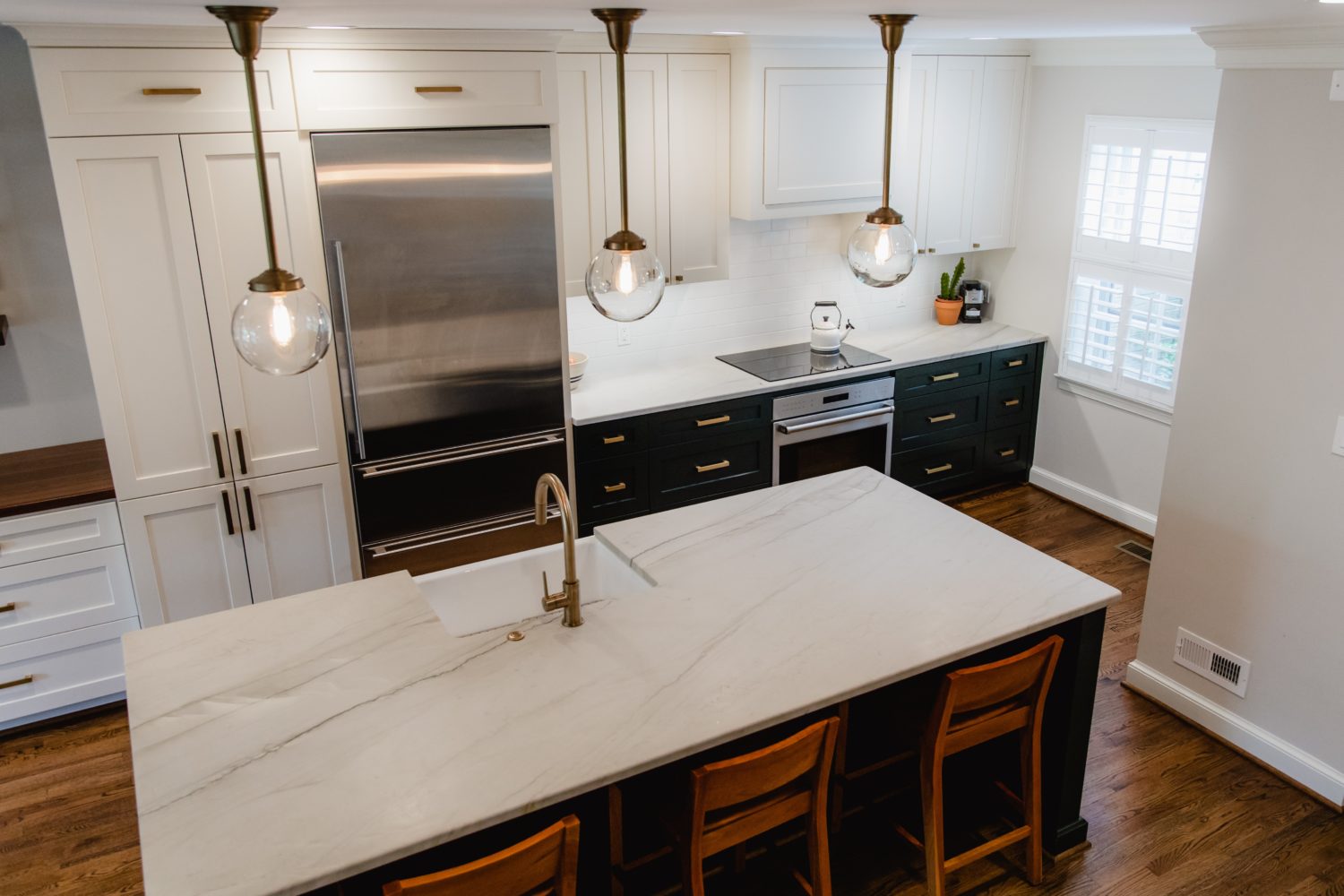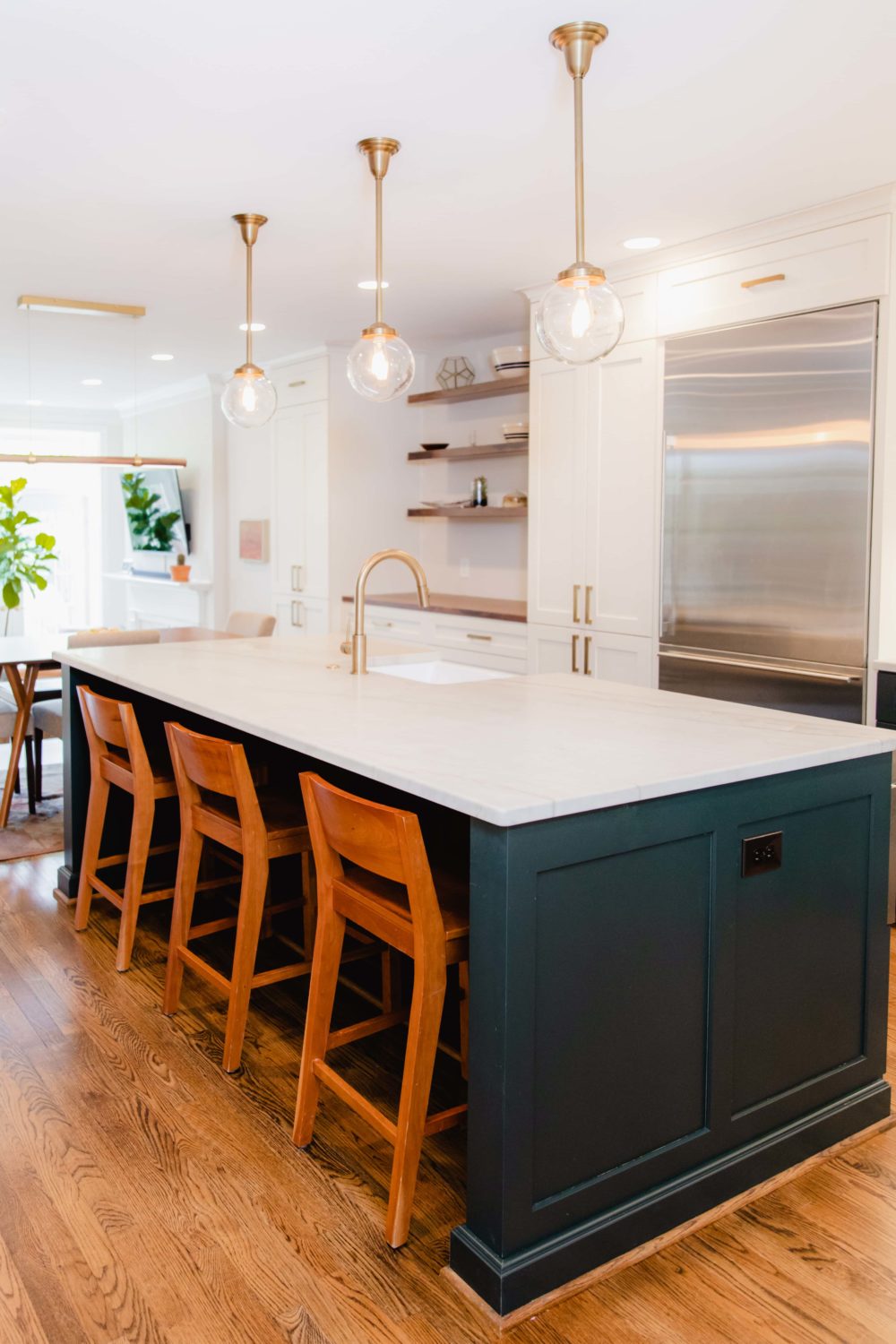Hiring a Design-Build Firm in Washington DC: How to Simplify Your Home Remodel
Remodeling your home should be an exciting process, not a stressful one. Whether you’re planning a whole home renovation, a kitchen remodel, or a bathroom upgrade in Washington DC, choosing the right design-build firm can make all the difference. A trusted partner streamlines your project from design through construction—saving you time, minimizing miscommunication, and delivering a cohesive vision from start to finish.
This guide breaks down everything you need to know about hiring a Washington DC design-build firm: what design-build means, how it compares to the traditional model, what to look for in a partner, and how the process works from concept to completion. By the end, you’ll know how to confidently move forward with your remodeling plans and find the right firm to bring your vision to life.
What Is a Design-Build Firm?
A design-build firm combines architectural design and construction under one roof. Unlike the traditional method—where you hire a separate architect, designer, and contractor—a design-build company manages every phase of your project with one integrated team.
This means your architectural designers, project managers, and craftsmen all work together from the start to create a unified plan, ensuring that what’s drawn on paper is feasible, cost-efficient, and aligned with your vision.
Hammer Design Build Remodel is one such firm in Washington DC that specializes in whole-home renovations, kitchen remodels, bathroom remodels, and home additions. This approach removes the confusion and coordination headaches that come from juggling multiple vendors, and it establishes one point of accountability throughout the project.
For an in-depth look at how this approach benefits homeowners, see our post: What Is a Design Build Firm? Benefits and Process.
Why Choose a Design-Build Firm in Washington DC?
Hiring a design-build firm in Washington DC gives homeowners several key advantages—especially for complex urban renovations or older row homes that require structural updates.
1. Streamlined Communication
With design and construction handled by the same company, communication is more efficient. Your architect and builder collaborate in real-time, reducing delays and ensuring design decisions align with your budget and timeline.
2. Cost and Timeline Efficiency
Because your design-build team develops plans with construction logistics in mind, they can offer more accurate pricing early on. This helps prevent change orders and scope creep once construction begins.
3. Unified Accountability
A single point of responsibility ensures fewer misunderstandings. Your design-build firm manages all aspects—permitting, materials, subcontractors—so there’s no finger-pointing between architect and builder.
4. Creative Collaboration
Design-build firms encourage collaboration between homeowners and designers. This means you get to refine your vision while benefiting from professional expertise in space planning, functionality, and aesthetics.
5. Local Expertise
Washington DC’s architecture and permitting process can be complex. Local firms like Hammer Design Build Remodel understand DC’s unique building codes, zoning requirements, and architectural character—from Capitol Hill row houses to Chevy Chase colonials—making them ideal partners for your renovation.
The Design-Build Process: Step-by-Step
Understanding the design-build process will help you set clear expectations and feel confident in your renovation journey.
Step 1: Consultation and Vision Setting
Your project begins with a consultation to discuss your goals, style preferences, and investment range. Hammer’s Whole Home Renovations team, for example, uses this stage to explore layout options, design inspirations, and must-have features.
Step 2: Design Development
Next, designers create detailed drawings and renderings that translate your ideas into visual plans. You’ll review floor plans, 3D models, and material options—balancing aesthetics with functionality.
If you’re remodeling a kitchen, you might explore layouts like open-concept or galley designs through our Kitchen Remodeling page, which showcases how thoughtful design can maximize efficiency and style.
Step 3: Selections and Specifications
With the design finalized, you’ll choose materials—cabinets, tile, lighting, and fixtures—with guidance from a project designer. This ensures all elements harmonize before construction begins.
Step 4: Construction and Project Management
Once the design is approved, construction begins under the same team’s management. A dedicated project manager oversees daily progress, ensuring timelines are met and quality standards upheld.
If your remodel involves adding square footage, the Home Additions team ensures structural integration aligns seamlessly with your existing home.
Step 5: Final Walkthrough and Warranty
After completion, you’ll conduct a final walkthrough with your project manager to confirm every detail meets your expectations. Quality craftsmanship and communication define this stage, ensuring your remodel is both stunning and structurally sound.
Real Examples: DC Design-Build Projects
Seeing the design-build process in action can help you visualize what’s possible.
One homeowner in Northwest DC transformed a dated property through a Modern Whole Home Renovation that combined clean lines, natural light, and efficient storage. The seamless collaboration between design and construction teams kept the project on schedule and within budget.
Another example—a Row House Design and Remodeling Project—illustrates how the design-build model works particularly well for tight urban lots. By managing both design and permitting, the team maintained the home’s historic charm while modernizing its interiors for open-concept living.
You can view more examples in Hammer’s Portfolio, featuring projects ranging from kitchen remodels and bathroom renovations to whole-home transformations.
How to Evaluate Design-Build Firms
Not all design-build companies are created equal. Before signing a contract, take time to evaluate a firm’s experience, process, and reputation.
1. Review Their Portfolio
Examine past projects to ensure the firm has experience with your home type and design style. A reputable company should showcase a diverse portfolio that demonstrates craftsmanship and consistency.
2. Read Client Testimonials
Look for reviews that highlight communication, professionalism, and post-project support. See Hammer’s Testimonials to understand how satisfied clients describe their remodeling experience.
3. Verify Licensing and Insurance
Confirm the firm is properly licensed to work in DC, Maryland, or Virginia, and carries both liability and workers’ compensation insurance.
4. Ask About the Design Process
Inquire about how the team approaches collaboration, revisions, and project management. A transparent process should include detailed drawings, itemized proposals, and clear timelines.
5. Check Communication and Compatibility
Finally, trust your instincts. The best design-build firm should feel like a partner—one that listens, advises, and values your input throughout the journey.
Common Mistakes to Avoid
Even with professional help, homeowners can fall into common traps during their remodel. Here’s how to sidestep them.
Mistake #1: Choosing Based on Price Alone
The lowest bid can be misleading if it leaves out details or uses inferior materials. A comprehensive proposal from a reputable firm reflects true scope and quality.
Mistake #2: Skipping the Design Phase
Some homeowners rush into construction without finalizing designs. This leads to costly changes later. Ensure your team completes detailed plans and selections before breaking ground.
Mistake #3: Failing to Communicate Goals Clearly
Clarity upfront avoids disappointment later. Share your priorities—whether it’s more natural light, better flow, or added storage—so your design-build team can tailor the plan accordingly.
Mistake #4: Ignoring Permits and Codes
Washington DC has strict zoning and permitting requirements. A local design-build firm handles these on your behalf, saving you from delays or fines.
Mistake #5: Not Vetting the Team’s Credentials
Always confirm a company’s track record and ask for references from recent clients.
Frequently Asked Questions
What does a design-build firm do?
A design-build firm manages both the design and construction phases of your project. This integrated approach improves coordination, reduces costs, and ensures your vision is executed precisely.
What types of projects use design-build firms?
Design-build is ideal for whole home renovations, kitchen remodels, bathroom remodels, and home additions—essentially any project requiring architectural design and construction.
Is design-build more expensive than hiring separate contractors?
Not necessarily. The streamlined communication and early collaboration often reduce change orders, keeping costs more predictable.
Do design-build firms handle permits in Washington DC?
Yes. Experienced DC firms like Hammer manage all permitting, zoning, and inspections to ensure compliance with local building codes.
Can I use a design-build firm for a historic home renovation?
Absolutely. Design-build teams often specialize in integrating modern function while preserving the architectural integrity of historic DC homes.
Conclusion
Hiring a design-build firm in Washington DC transforms the way you experience remodeling. From the first sketch to the final walkthrough, you gain a team that listens, plans, and executes your vision with precision and transparency.
If you’re planning a home renovation, kitchen remodel, or home addition in the DC area, partnering with an experienced local firm ensures your project stays organized and enjoyable from start to finish.
Ready to begin your renovation journey? Contact Hammer Design Build Remodel at 202-559-3990 to schedule your consultation and discover how a collaborative design-build process can bring your dream home to life.


